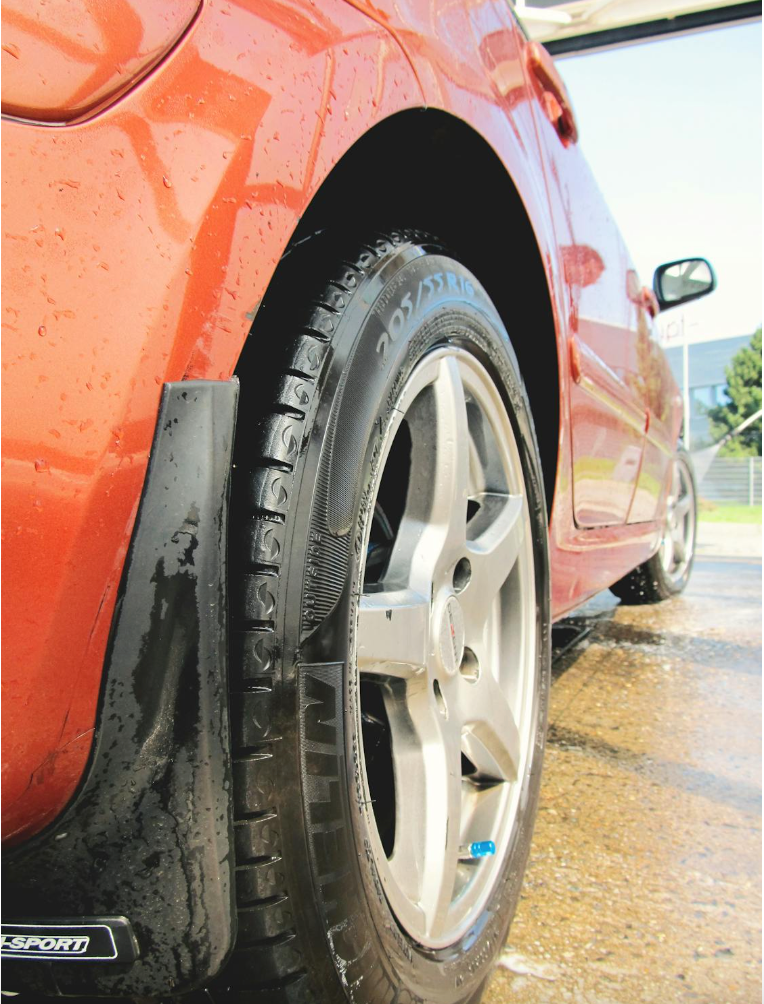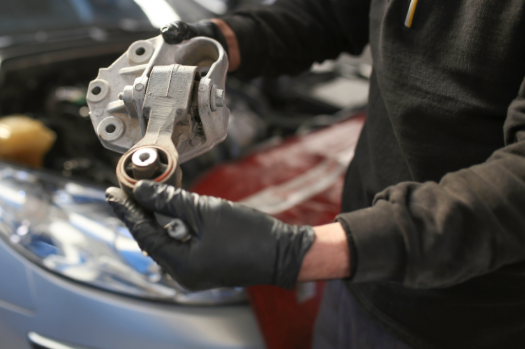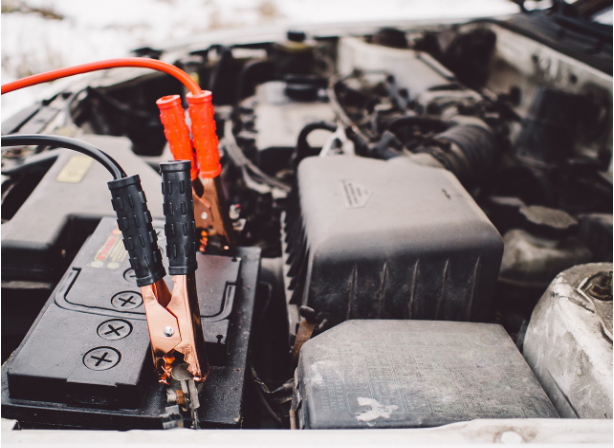NOW HIRING! Visit our Careers page to apply today.
Going on a Road Trip? KS Autocare Says to Keep These Things in Your Vehicle
Road trip! For many of us, taking off across the country is fun, an escape from the ordinary. For others, planning the trip can create stress and anxiety. Where to go? Which roads to take to get there? How long should the trip be? And last but certainly not least, what should you bring?
If you turn to the internet, you can find some amazing lists of road trip essentials. The first list contains dozens of items, while the second limits you to 65:
These may not be realistic options. Check the lists for ideas, but use good judgment and common sense and tailor the lists to your personal needs.
KS Autocare’s Suggestions for What to Pack
The key to success is to focus on your needs, not wants, because if you fall into the trap of packing the nice-to-haves, you won’t have room for people! That statement leads to your first need:
- Space: If you have a family of five and a small car, consider renting a minivan. Road trips are no fun when you don’t have room to breathe. Don’t be one of those cars crammed to the ceiling with a carrier on top and a box in the hitch on the back.
- Your budget: Know before you start how much you’ll be able to spend without putting yourself in debt. Consider how and where you’ll sleep and eat and how (if!) you can afford high-dollar amusements.
- Emergency kit: Road trips are always an adventure, sometimes good, sometimes – well, not so good. If you’re caught in severe weather or other natural (or manmade) disasters, you need a bag of life-saving essentials. A school backpack is a great container; here’s an “ultimate list” to tailor to your needs: https://www.getawaymavens.com/car-survival-kit/ .
Other Ideas to Include
- Food and drink: Remember childhood road trips when Mom packed food like you were trekking the wilderness? Some people like to eat three meals out, some like – or hate – fast food, some carry all their food, and some want a combination. Unlike the few choices available when Baby Boomers were kids, there are now great snack options and compact coolers. And consider whether you really need to carry that case of bottled water.
- Duffel bags: One medium-sized duffel per person. A duffel bag is much easier to cram into limited space. At the same time, the medium size keeps a fashion-forward person from bringing along their whole closet. Each duffel should include all clothes, medications, and toiletries.
Let kids ten and under pack their own, but sneakily check to make sure they didn’t pack Legos but no underwear. If you plan to stay one night in hotels or motels, consider packing one more duffel containing a change of underwear for each person and a few toiletries and medicines.
- Entertainment: Road trips can be notorious for boredom and squabbling – and we’re not just talking about children. Though we’ve read about families promoting togetherness by leaving all electronics at home, we suggest this might not be a good time to ban them. A movie and earphones in the back seat can bring peace to the front seat.
- The car’s trunk: No carton of books – thank goodness for Kindle! And a secret bag in the trunk that contains new small, cheap toys. Near the end of a long day, pop out a surprise to amuse the little peeps.
Things that Are a Must to Keep in the Car
- The obvious things: your registration and proof of insurance.
- Your purse or wallet with health insurance cards, credit cards, and paper money and coins.
- Your auto insurance paperwork and contact information for roadside assistance. Consider upgrading your collision and liability insurance for the period of the trip.
- Owner’s manual to help figure out all the things you’ve forgotten.
- An extra car key (NOT on the same key ring as your usual key). Translate this to key fobs if your car uses them.
- A paper map or road atlas. If an accident pushes you off the interstate, where will you go? How will you find your way to the next entrance ramp? And if you’re a non-interstate traveler, don’t rely on your GPS to get you where you need to go. What if you lose the GPS connection? Keep your atlas handy.
- First aid kit. This one is obvious, but kits are often neglected or allowed to age to the point that the medications are dried up and the band-aids won’t stick.
- Car phone charger and hands-free phone mount.
- Trash bag, baby wipes, and paper towels. You just never know.
- Hand sanitizer for the same reason.
- Tire gauge. A “low tire pressure” light on your dashboard may not tell you which tire is leaking.
- Flashlight or (even better) a headlamp that will free your hands in a nighttime emergency.
Preparing Your Vehicle at KS Autocare
Now that you’ve planned what you’ll pack, let’s look at the most important piece of a great road trip:
Safe And Smoothly Operating Vehicle
- Clean out the car and remove all the trash and anything you won’t need.
- Check your tires’ age, condition, and inflation, including the spare.
- Make sure the spare is in good shape, along with the tools needed to change a tire.
- It couldn’t hurt to have your oil changed and have the shop check all your fluid levels. (No need to stress out here; KS AutoCare can handle all your maintenance and repair needs.)
Here’s an article on preparing your vehicle for a road trip. Of course, it contains yet another list of essentials: https://roadtrippers.com/magazine/prepare-car-road-trip/
Your Car Is Your Lifeline – Don’t Just Take It Anywhere
Take your car to a repair shop you trust, such as KS AutoCare in Elgin, Illinois. Tell the mechanic your plans, and ask them to check your vehicle for a road trip. Ask what fluids you should bring along – an extra gallon of water might be good. Does your car burn oil? Take a couple of quarts.
Preparing for a road trip is not just an afterthought; It’s a necessity and the most important thing you do. Everything else is gravy.
Remember, KS AutoCare has everything you need to prepare your vehicle for that road trip. Call or visit us today.



KS Autocare - Best Auto Repair Shop in Elgin IL
(847) 321-7834
Mon - Fri 7:00am - 6:00pm
Payment Options




KS Autocare - Best Auto Repair Shop in Elgin IL
(847) 321-7834
Mon - Fri 7:00am - 6:00pm
Services
List of Services
-
Reliable Auto Air Conditioning ServicesReliable Auto Air Conditioning Services
-
Air ConditioningAir Conditioning
-
Expert Wheel Alignment Services in Elgin, ILExpert Wheel Alignment Services in Elgin, IL
-
Expert Alternator Services in Elgin, ILExpert Alternator Services in Elgin, IL
-
Professional Automatic Transmission Services in Elgin, ILProfessional Automatic Transmission Services in Elgin, IL
-
Expert Differential and Axle Services in Elgin, ILExpert Differential and Axle Services in Elgin, IL
-
Quality Battery Service in Elgin, ILQuality Battery Service in Elgin, IL
-
Brake Repair & ServicesBrake Repair & Services
-
Brake Fluid Service | KS Autocare | Elgin, ILBrake Fluid Service | KS Autocare | Elgin, IL
-
Auto Electrical ServicesAuto Electrical Services
-
Engine Repair & ServicesEngine Repair & Services
-
Scheduled Maintenance ServicesScheduled Maintenance Services
-
Oil Change ServicesOil Change Services
-
Tire Services & AlignmentsTire Services & Alignments
-
Transmission Repair & ServicesTransmission Repair & Services
List of Services
-
Reliable Auto Air Conditioning ServicesReliable Auto Air Conditioning Services
-
Air ConditioningAir Conditioning
-
Expert Wheel Alignment Services in Elgin, ILExpert Wheel Alignment Services in Elgin, IL
-
Expert Alternator Services in Elgin, ILExpert Alternator Services in Elgin, IL
-
Professional Automatic Transmission Services in Elgin, ILProfessional Automatic Transmission Services in Elgin, IL
-
Expert Differential and Axle Services in Elgin, ILExpert Differential and Axle Services in Elgin, IL
-
Quality Battery Service in Elgin, ILQuality Battery Service in Elgin, IL
-
Brake Repair & ServicesBrake Repair & Services
-
Brake Fluid Service | KS Autocare | Elgin, ILBrake Fluid Service | KS Autocare | Elgin, IL
-
Auto Electrical ServicesAuto Electrical Services
-
Engine Repair & ServicesEngine Repair & Services
-
Scheduled Maintenance ServicesScheduled Maintenance Services
-
Oil Change ServicesOil Change Services
-
Tire Services & AlignmentsTire Services & Alignments
-
Transmission Repair & ServicesTransmission Repair & Services
Payment Options




Services
List of Services
-
Reliable Auto Air Conditioning ServicesReliable Auto Air Conditioning Services
-
Air ConditioningAir Conditioning
-
Expert Wheel Alignment Services in Elgin, ILExpert Wheel Alignment Services in Elgin, IL
-
Expert Alternator Services in Elgin, ILExpert Alternator Services in Elgin, IL
-
Professional Automatic Transmission Services in Elgin, ILProfessional Automatic Transmission Services in Elgin, IL
-
Expert Differential and Axle Services in Elgin, ILExpert Differential and Axle Services in Elgin, IL
-
Quality Battery Service in Elgin, ILQuality Battery Service in Elgin, IL
-
Brake Repair & ServicesBrake Repair & Services
-
Brake Fluid Service | KS Autocare | Elgin, ILBrake Fluid Service | KS Autocare | Elgin, IL
-
Auto Electrical ServicesAuto Electrical Services
-
Engine Repair & ServicesEngine Repair & Services
-
Scheduled Maintenance ServicesScheduled Maintenance Services
-
Oil Change ServicesOil Change Services
-
Tire Services & AlignmentsTire Services & Alignments
-
Transmission Repair & ServicesTransmission Repair & Services
List of Services
-
Reliable Auto Air Conditioning ServicesReliable Auto Air Conditioning Services
-
Air ConditioningAir Conditioning
-
Expert Wheel Alignment Services in Elgin, ILExpert Wheel Alignment Services in Elgin, IL
-
Expert Alternator Services in Elgin, ILExpert Alternator Services in Elgin, IL
-
Professional Automatic Transmission Services in Elgin, ILProfessional Automatic Transmission Services in Elgin, IL
-
Expert Differential and Axle Services in Elgin, ILExpert Differential and Axle Services in Elgin, IL
-
Quality Battery Service in Elgin, ILQuality Battery Service in Elgin, IL
-
Brake Repair & ServicesBrake Repair & Services
-
Brake Fluid Service | KS Autocare | Elgin, ILBrake Fluid Service | KS Autocare | Elgin, IL
-
Auto Electrical ServicesAuto Electrical Services
-
Engine Repair & ServicesEngine Repair & Services
-
Scheduled Maintenance ServicesScheduled Maintenance Services
-
Oil Change ServicesOil Change Services
-
Tire Services & AlignmentsTire Services & Alignments
-
Transmission Repair & ServicesTransmission Repair & Services
© 2024 KS Autocare. All Rights Reserved | Website managed by Shopgenie



